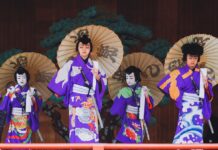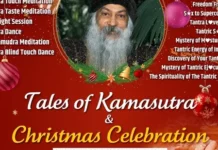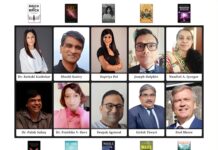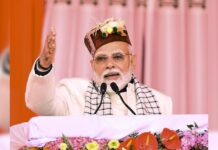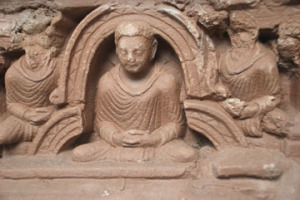
Call it absent-minded coincidence or Buddha’s grand plan, former journalist and author Sunita Dwivedi was born in Kushinagar where Buddha attained the Mahaparinirvana. From the tiny alcove of her room, she could see the huge cremation ground and Buddha’s statue loomed like a shadow.
Perhaps that quirk of fate unwittingly decided Sunita’s quest – to seek Buddha, to walk on his footsteps, to find him around the world. No, Sunita is a not a Buddhist. She happens to love Buddha. And write about him – her fourth book on Buddha (Buddha in Central Asia; Rupa, Price: Rs 500; available on Flipkart) has just hit the stands.
Sunita clings to that moment when The Reclining Buddha at the Mahaparinirvana Temple lay calmly and uttered his last words to Anand, his disciple, ‘Decay is inherent in all composite things. Work out your own salvation with diligence.’ She never forgot these last words of the Reclining Buddha and started working towards her own salvation.
For that salvation – and for Buddha’s love – she has traveled to remotest corners and found Him – the bronze Buddha in Po Lin monastery, the giant Buddhas of Majishan, Buddhist rock edicts in Altyn-Emel, the Buddhist petroglyphs at Almaty…So many Buddhas in so many countries.
Her last stop: Pakistan, a region which in ancient days was the hub of Buddhism. But getting to Buddha there
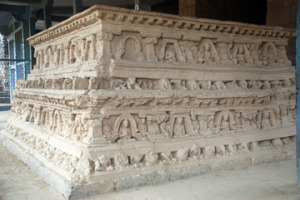
was fraught with danger and hurdles. Visa was the big question, but an invitation from Zulfiqar Rahim of Gandhara Art and Culture Association vanquished all visa frights. In four days, Sunita had the Pakistan visa in hand. Instead of flying, she decided to take the Friendship Bus from New Delhi to Lahore. Out went the jeans and trousers from her suitcase, Sunita threw in long kurtas, salwars and duppata.
With visa in hand, bags packed and an itinerary ready, she waited to step into Pakistan and find Buddha. Alone. But hell was breaking loose in Islamabad. Thousands of protestors were on the streets. Tear bombs were exploding and politicians were crying hoarse. Even nature was irate. Rivers were swelling and the fear of floods was staring hard. But nothing deters Sunita. Nothing. She knows Buddha will protect her. Everywhere.
In Lahore, her steps were hurrying towards Lahore Museum where lie the second century fasting Buddha image, a copy of the famous Kanishka casket and other antiquities of Gandhara art. It was in Gandhara that the artful depiction of Buddha’s life, earlier incarnations and mudras were first painted and sculpted. At Mandara village, stood a colossal stupa, perhaps built by Emperor Asoka in third century BC. Measuring 128 ft in diameter, the rubble-filled hemispherical stupa is embellished with lotus motifs on dressed stone. The stupa also marks the place where Buddha in his earlier life fed his flesh to a starving tiger.
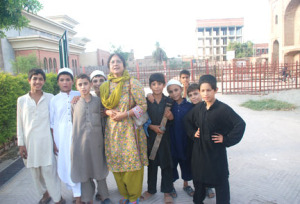 Sunita was following the Buddha route — Taxila, Peshawar and Mardan. Taxila boasts of oldest and most important Dharamrajika Stupa which lies on the foothills of the Hathial spur. Peshawar had been the ancient centre of trade and learning. In Peshawar Museum lay several giant Buddha images in black, blue and grey schist excavated from various Buddhist sites in and around Peshawar.
Sunita was following the Buddha route — Taxila, Peshawar and Mardan. Taxila boasts of oldest and most important Dharamrajika Stupa which lies on the foothills of the Hathial spur. Peshawar had been the ancient centre of trade and learning. In Peshawar Museum lay several giant Buddha images in black, blue and grey schist excavated from various Buddhist sites in and around Peshawar.
Buddha seemed everywhere. A week in Pakistan and not for a moment did Sunita feel unsafe. All stories about Indo-Pak animosity seemed a myth. For her, Pakistan seemed like another home, the generosity of its people heart-touching. Sunita had traveled to Pakistan to find Buddha. She found him. She also found what Buddha preached – love and compassion. In the eyes of strangers who offered help; in the kind hospitality of Mian Imran Masood who welcomed her home and offered tea; in the kindness of Zulfiqar Rahim and his wife Esther Park; the benevolence of Ayesha M Hamid. In Pakistan, Sunita knew no fear. She found Buddha. And the love of its people.
Preeti Verma Lal

